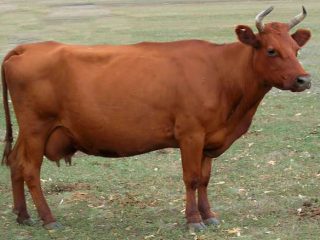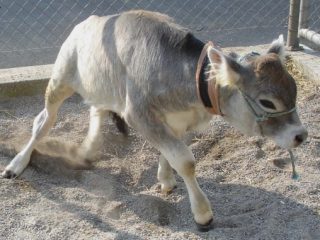Content
- 1 What is bovine tuberculosis
- 2 The causative agent of tuberculosis in cattle
- 3 Types of tuberculosis in cattle
- 4 Symptoms of tuberculosis in cattle
- 5 Diagnosis of tuberculosis in cattle
- 6 Treatment of tuberculosis in cattle
- 7 Pathological changes in tuberculosis in cattle
- 8 Prevention of tuberculosis in cattle
- 9 Is tuberculosis transmitted to humans from cattle?
- 10 Is it possible to drink milk if the cow has tuberculosis?
- 11 Conclusion
Tuberculinization of cattle is a veterinary measure aimed at identifying animals with tuberculosis. It should be done twice a year. Tuberculinization is carried out using a special drug - purified tuberculin, which causes an allergic reaction in cattle, which makes it possible to determine the degree of pathology. Tuberculin is administered subcutaneously, and if tuberculosis is suspected, an additional set of cattle tests is carried out.
What is bovine tuberculosis

Koch stick
Bovine tuberculosis is an infectious disease that occurs in a chronic form, characterized by the formation of certain nodules - tubercles - in the affected organ. The disease is diverse in its course and manifestation, and can affect different organs. Bovine tuberculosis is common in many countries, the severity of the disease continues to increase: at the beginning of the 21st century, the world situation with tuberculosis worsened.The disease causes damage to large and small farms due to a significant decrease in animal productivity, early culling, and high costs for therapeutic measures and preventive measures.
Despite the fact that tuberculosis has been known for a long time, it was described by Hippocrates, effective measures to combat the disease have not yet been found.
Many species of domestic and wild animals, birds and humans are susceptible to tuberculosis. The disease is characterized by widespread occurrence, which depends on many reasons - reduced functions of the immune system, the presence of chronic pathologies in cattle, unbalanced feeding, lack of walking, high humidity in the barn and other provoking factors. That is why it is necessary to identify an infected individual in the herd as soon as possible.
The causative agent of tuberculosis in cattle
The causative agent of tuberculosis in cattle is the microorganism Mycobacterium tuberculosis. It is considered an anaerobic bacterium that does not form spores. The forms of the pathogen are varied, resembling straight or slightly bent sticks. There are rounded shapes, in the form of a chain. There are practically no single organisms in the colony.
Bovine tuberculosis has 3 types of pathogens that lead to infection: bovine, avian and human forms of the microorganism. However, they are able to disguise themselves and be reborn:
- the human strain infects cattle, pigs, and fur-bearing animals; dogs and cats are less commonly infected;
- bovine strain (paratuberculosis) infects cows and is transmitted to humans, as well as domestic and wild animals;
- the avian strain affects birds but is occasionally found in pigs.
The main differences between these forms include different virulence for animal species and humans.
Main routes of infection:
- airborne, in which the disease is quickly transmitted to other cattle, especially in cramped, poorly ventilated areas;
- nutritional (the pathogen enters the body of a healthy animal through the digestive system);
- contact, which is quite rare in cattle;
- intrauterine infection at calving.
The causative agent of tuberculosis is quite viable: in air-dried lungs it remains active for 200 days, in soil and manure for up to 3-4 years. The sun disinfects the bacteria after 2-3 days; in infected cattle carcasses, the microorganism continues its harmful activity for about a year. Heating and boiling have a detrimental effect on Koch's wand. Chemicals disinfect the bacteria no earlier than an hour later, depending on the activity of the substance.

Tuberculinization of livestock
Sources of infection are:
- air contaminated during coughing and sneezing;
- infected milk;
- saliva;
- urine and feces of sick livestock;
- contact with infected wild animals.
Types of tuberculosis in cattle
There are pulmonary and intestinal forms of tuberculosis in cattle based on the location of the pathology. Less commonly diagnosed are lesions of the serous integument, genitalia, udder tuberculosis in cows or a generalized form of the disease.
However, most often the lungs are affected by tuberculosis in cattle. This form of the disease is characterized by a cough and a slight increase in body temperature, while the animal’s appetite and productivity are within normal limits.
As tuberculosis develops, signs of inflammation of the lungs and pleura appear. The cough becomes painful, breathing becomes rapid, accompanied by wheezing. Coughing attacks intensify in the morning and at night, and sputum is produced abundantly. In the chest of cattle, wheezing can be heard upon percussion. A cow experiences severe pain due to pneumonia during palpation. In addition, the animal quickly becomes exhausted, the skin looks dry, the coat loses its shine, and the lymph nodes become enlarged. This leads to a narrowing of the esophagus and subsequent disruption of the rumen and digestion in general.
With tuberculous lesions of the mammary gland in cows, the suprauterine lymph nodes become enlarged. The udder turns red and swells. During milking, watery milk with cottage cheese flakes is released and may contain bloody clots.
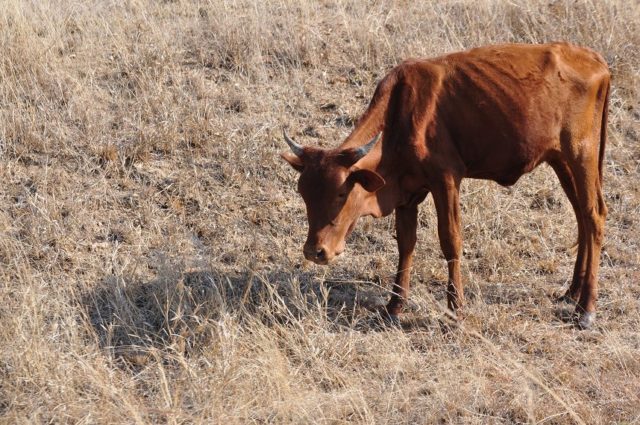
Infected individual
When the genitals are affected in bulls, pathologies of the genital organs are noted, including orchitis (inflammation of the testicle), and uveitis (inflammation of the choroid of the eyeball) is often observed. Cows show barrenness, foul-smelling discharge from the genitals, and increased estrus.
Symptoms of tuberculosis in cattle
Typically, tuberculosis in cattle occurs in a chronic form, in calves most often in an acute form.Most infected animals do not differ from healthy animals in general condition, behavior, and appearance. The appearance of symptoms and pronounced forms of the disease indicates a long-standing infection.
In the development of tuberculosis in cattle, several stages of the disease are noted:
- Primary tuberculosis. It has several forms - from the initial complex and the period of early generalization.
- Secondary pathology. Has a period of late generalization or tuberculosis of a specific organ.
Primary tuberculosis is the stage of the disease that occurs after infection and is manifested by the primary complex.
The primary complex, which is localized in several systems of the cattle body at once, is called complex. Early generalization of the disease - its spread throughout the body. Secondary tuberculosis develops as a continuation of the primary one or occurs as a result of repeated infection (reinfection).
There are open (active) forms of tuberculosis in cattle and closed (latent) forms of the disease. With open tuberculosis, the pathogen is released into the environment with feces, urine, milk, and sputum. Tuberculosis of the intestines, uterus, and mammary gland is always considered an open form. The closed form of the disease is characterized by the presence of foci without release of the pathogen into the external environment.

Cattle tuberculosis in the photo
Despite the fact that the disease often occurs in a latent form, the animal owner should be alert to the following signs of tuberculosis in cattle:
- dyspnea;
- increased body temperature;
- sudden depletion of the animal;
- loss of appetite;
- decreased productivity;
- dry skin;
- cough, sputum production;
- mucus from the nose, increased salivation;
- enlargement of the retropharyngeal glands;
- disruption of the digestive system.
With generalized tuberculosis, an increase in lymph nodes throughout the body of cattle is noted.
Diagnosis of tuberculosis in cattle
Diagnostic measures should include clinical, laboratory, pathological methods, as well as an allergic intradermal tuberculin test. It is necessary to exclude diseases with similar symptoms: pericarditis, contagious pleuropneumonia, pasteurellosis, pseudotuberculosis, helminthic infestations.
The main and most reliable method for diagnosing tuberculosis in cattle, other animal species and humans is an allergy test. To do this, use the classic version of tuberculin, which contains dead cultures of the tuberculosis bacillus. The drug can be administered to cattle subcutaneously or by eye drops. Tuberculinization should be carried out 2 times a year before animals are taken out to pasture in the spring and before switching to winter housing. As for young animals, each calf is tested at two months of age. After administration of the drug, it is necessary to monitor the reaction to tuberculin in cattle after 72 hours. It is counted if in cows the skin fold differs in thickness by more than 3 mm, in bulls - if there is edema. In addition, you need to monitor the reaction of the skin (swelling, redness, temperature). Sometimes, to clarify the diagnosis of tuberculosis and identify a nonspecific reaction of the body, cattle are subjected to differential diagnosis using a simultaneous test.

Diagnostics in calves
Also important is the clinical method of diagnosing cattle, in which a veterinarian pays attention to the clinical symptoms of the disease.
Treatment of tuberculosis in cattle
Veterinary medicine does not have an effective treatment against bovine tuberculosis. Thus, it is impossible to cure infected animals. But according to the results of a study of the entire livestock, this farm is classified as unfavorable; a number of health-improving measures are carried out in the herd.
The herd taken under control by decision of the district administration is subject to some restrictions that will prevent the spread of infection. Also, a specialist is assigned to the farm who will monitor the strict implementation of instructions for combating tuberculosis in the cattle herd.
Health activities on farms are carried out in the following ways:
- Regular laboratory tests to identify all infected cattle. Inspections are carried out at intervals of 60 days. If infected cows are found, they should be culled immediately. Tests are carried out until all animals in the herd show a negative result. Only in this case will the livestock quarantine be lifted for bovine tuberculosis, and the farm will be considered healthy.
- Complete replacement of the cattle herd with healthy animals with mandatory disinfection of the barn and surrounding areas. This method is effective if the percentage of cows that reacted positively is too high (more than 15% of the total number of heads in the herd). Then the farm is quarantined.
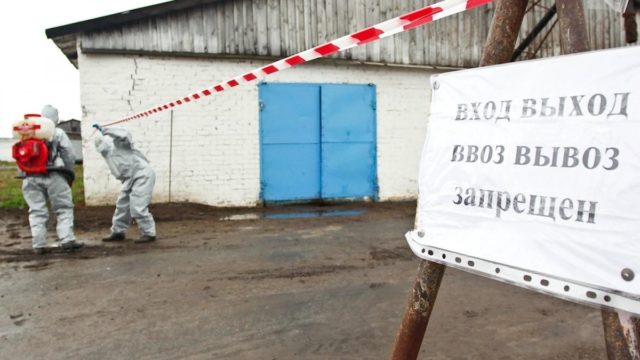
Measures to improve livestock health
Measures to completely replace the herd include the following measures:
- all animals, including young animals, are sent for slaughter;
- milk obtained from all cows is boiled for about 5 minutes at 90 °C before disposal;
- the barn is cleaned of dirt, manure, and the old covering is removed;
- the entire area is treated with a solution of caustic salt and formaldehyde;
- garbage is transported outside the farm, as well as manure and topsoil;
- All equipment must be recycled.
After all the work, the barn is restored, the rest of the premises, the surrounding area, drinking bowls and feeders are installed. Then everything is re-treated with disinfectant solutions, after which samples are taken for the presence of the pathogen. After receiving negative results, the quarantine is lifted, the owner can purchase a new herd of cattle from those farms that are listed as safe by the veterinary service. The new herd is also tested with tuberculin.

Tubercles
Pathological changes in tuberculosis in cattle
When autopsying a cow infected with tuberculosis, the following changes are noted:
- some nodules (tubercles) in organs and tissues ranging in size from several mm to 10 cm, which have a gray color with a dense structure;
- changes in serous tissue in the abdominal cavity;
- tubercles and ulcers of the mucous membranes;
- suppuration, cavities;
- disturbance of gas exchange in the lungs;
- pulmonary necrosis with purulent formations;
- severe exhaustion;
- signs of bronchopneumonia;
- inflammatory processes in the lymph nodes;
- pathological changes in the liver, kidneys, heart, bone marrow.
The main sign of tuberculosis during autopsy of an animal is the presence of tubercles, which can be located in various areas of the lesion. When excision of the nodule, a layered, curd-like structure is visible.
Prevention of tuberculosis in cattle

Quarantine on the farm
The instructions for combating bovine tuberculosis provide for the implementation of certain sanitary and veterinary standards. Cattle owners need to:
- register the animals with the veterinary service; the tag with the number should be kept throughout the life of the animal;
- movement of individuals, purchase and sale must be carried out with the permission of veterinary authorities;
- carefully prepare feed to avoid contamination;
- keep all new animals in quarantine for a month;
- at the slightest suspicion of tuberculosis, notify veterinary specialists;
- promptly vaccinate and test cattle for this disease;
- comply with all standards of feeding, keeping and caring for livestock;
- take measures to combat rodents;
- enrich the cattle diet with vitamins and microelements;
- promptly identify and reject infected individuals;
- check meat at the slaughterhouse;
- monitor the health status of farm personnel;
- introduce quarantine if necessary, follow all rules in accordance with the instructions.
In addition to these measures, the BCG vaccine is used to develop immunity and as a specific prophylaxis. It is administered to animals at intervals of 14 days. Such strict measures are necessary, since bovine tuberculosis cannot be treated, often occurs in a latent form and causes enormous economic damage to farms. Therefore, preventive measures and diagnosis of the disease are extremely important.
Is tuberculosis transmitted to humans from cattle?
Tuberculosis is a highly contagious disease, and the bovine strain is also dangerous for humans. There are several ways of transmitting the pathogen from a sick cattle to humans:
- Airborne. A person can become infected, especially with the open form of tuberculosis, when the animal releases microparticles of mucus and bacteria into the environment. If the barn is at high temperature, humid, and there is no ventilation, then Koch's bacillus can remain in the air for a long time and be viable.
- Meat and dairy products. With bovine tuberculosis, meat and milk contain a huge number of pathogens. By consuming products without prior heat treatment, a person may become infected.
- Contact. When suffering from tuberculosis, an animal releases feces, urine, and sputum into the environment. Thus, livestock bedding becomes contaminated. Workers with skin lesions may become infected when cleaning the barn.
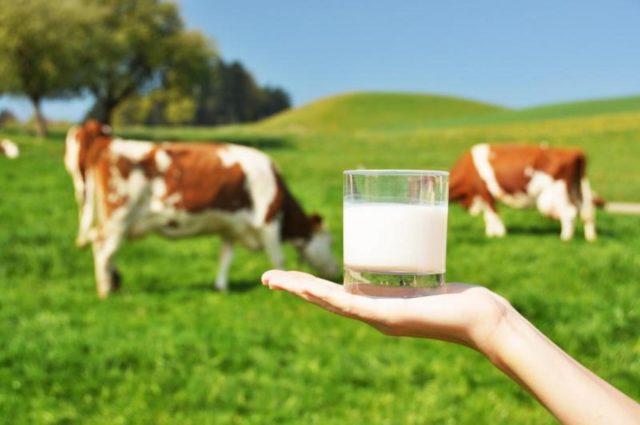
Milk should be boiled
Infection can also occur from birds, but the disease will proceed in a different way.
Is it possible to drink milk if the cow has tuberculosis?
The milk of infected cows is extremely dangerous for humans, especially for children. Infection is 90-100% possible. Koch's bacillus is resistant to acidic environments. Therefore, even in sour milk it remains viable for 20 days, in cheeses and butter for up to 1 year, in frozen products for up to 6-7 years.
Milk from healthy cows, but obtained from an unfavorable farm, is processed at a temperature of 90 °C for 5 minutes.Contaminated milk is strictly prohibited for consumption. However, after heat treatment, it is permissible to use it for fattening animals on the farm.
Milk from sick animals differs in composition. The amount of albumin and globulin in it doubles, the fat content decreases, and the viscosity increases. Such milk will not make cheese, yogurt will be watery, and kefir will be uneven.
The quality of meat and dairy products is monitored by veterinary and sanitary examination, which allows products of proper quality to be sold. In the presence of generalized tuberculosis, all carcasses, by order of the VSE, are disposed of, including bones and internal organs. Carcasses with a tuberculosis focus in any one organ or lymph node are sent for processing into sausages or canned food, in compliance with all veterinary standards. Cattle organs affected by tuberculosis are sent for disposal.
Conclusion
Tuberculinization of cattle is one of the main measures for the timely detection of infected individuals on farms. The event is carried out within the framework of a state task; it has clear instructions approved by the Deputy Head of Rosselkhoznadzor. Such strict measures are necessary, since the situation with bovine tuberculosis in our country raises some concerns among veterinary specialists. The adopted system of farm health improvement made it possible to significantly reduce the number of infected animals, but did not bring the desired result. Therefore, farm owners are required to pay close attention to this problem and follow all sanitary rules.

